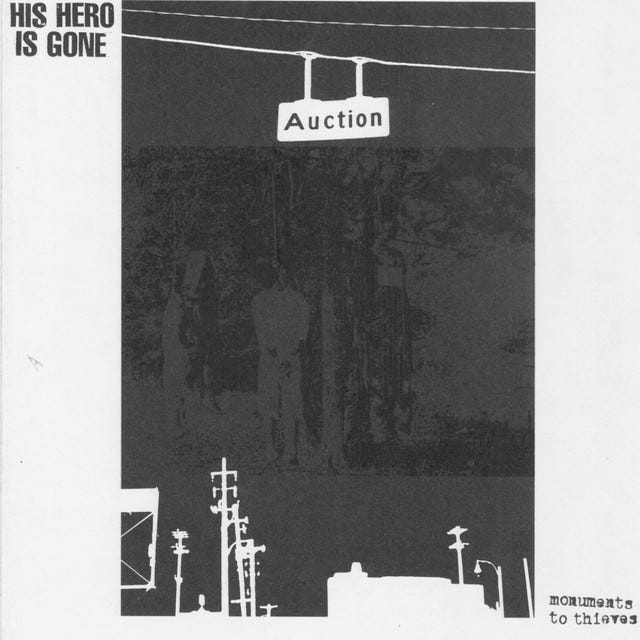EVERY GENRE PROJECT - August 3 - Neocrust
Genre of the Day - Neocrust
Album of the Day - Monuments to Thieves by His Hero is Gone (1997)
The world of hardocre and metal bands has constituted an ever-expanding universe since punk’s emergence in the ‘70s, bands continually pushing the limits of intensity to probe what lies at its fringes. It’s a realm filled with vividly eccentric descriptive words that would excite any music writer: sludge, crust, extreme, apocalyptic. Today, we reach a development in the crustier side of punk meeting metal, with an unapologetic penchant for DIY grittiness, supersonic guitar riffs, and punk’s characteristic societal protests manifesting in nomadic transience.
Many genres have key components of visual and fashion representation as a form of meaning that informs the music’s ethos, but not every one has such wide-ranging lifestyle impacts as crusty crust punk. The name crust literally derives from the crust that might develop in your hair or the dirt that accumulates on your skin as its pioneering punks moved from place to place without a home. In an excellent dissertation by David Roby on crust punk, an oxymoronic case of eloquent redundancy aptly illustrates the scene: “only the crusty crust punks live a life of crustiness.” This act of so-called ‘slumming it’ and letting your hair grow wild and dirty dedicates itself to an in-your-face (and in-your-nose) punk anarchism.
Speaking on the more strictly musical side, this scene emerged in the 1980s as these crusty croppings of bands embraced heavy metal-influenced sonics and showy speediness to punk outlooks with particular emphasis on apocalyptic lyrics. A decade later, neocrust moved these ideals slightly to the left with emerging metal sounds, focusing on increasing the melancholic and melodic character of riffs and incorporating screamo influences and darker ambiences from sludge metal. Sludge in musical form seems hard to conceptualize; it’s derived from slower, distorted sounds emanating from guitars tuned down, a thick and soupy sonic wall of guitar. Though crust style remained crusty, neocrust delved into envelope-pushing sonic directions and represents the endless shades of metal and hardcore oft-underhighlighted outside the scenes.
Memphis’ His Hero is Gone was one of the pioneering groups of neocrusties, and their 1997 album “Monuments to Thieves” features genuinely well-sketched social commentary with novel sonic paths in their collisions of metal and punk. “Like Weeds” commences with slow scene-setting before catapulting into some of the fastest drumming and most blistering sludginess that sonically evokes the image of Boston’s Molasses Disaster for me. “Monuments to Thieves” predates the peak of American discourse around Conservative monuments by twenty years, the bass vocals mincing no words in rightfully declaring them “statues built for bastards.” Though the lyrics are only apparent with the thankfully-available transcriptions, the way the singers boil their voices into molten lava is an astounding feat. “Cavities” feels wide-open and atmospheric, its richer melodic emphasis carrying into the relatively long (three minutes—these sonic blasts tend to maximize force within two) “Chain of Command,” demanding the listener: “We keep on licking / They keep on kicking / Keep making the pills / How long will we swallow?” Closer “The Unwanted Child” draws out its caustic drums and lingering guitar ooze to a mournful march, like neocrust’s take on Judgment Day. Its musical and lyrical blasts are rude awakenings, and exemplifies how punk should put you at unease and question who our statues are for and the higher powers that benefit from sowing distrust and paranoia.



